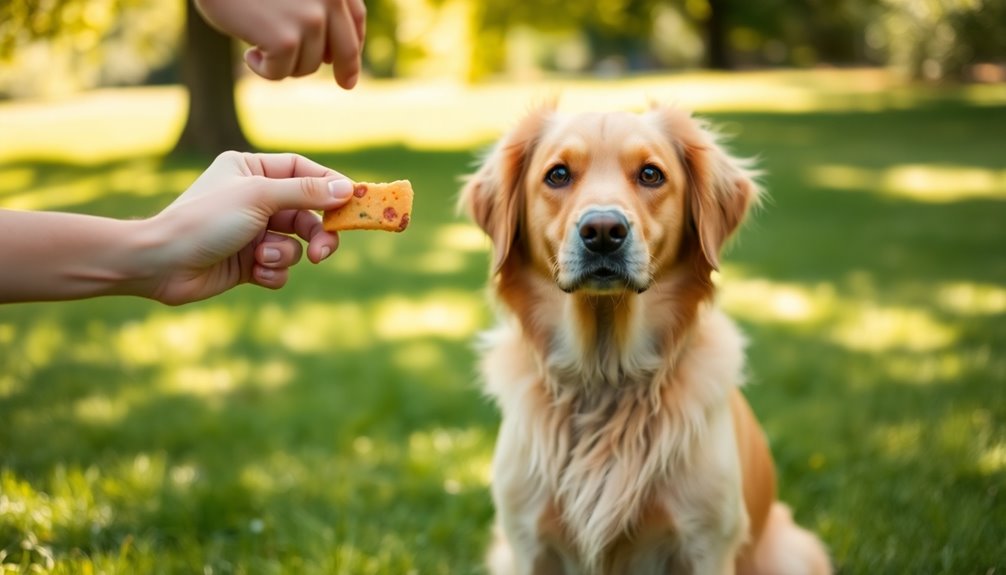To nip biting behaviors before they start, understand that it’s often linked to natural growth and sensory exploration. Offer safe teething toys or cold washcloths to soothe discomfort, and set clear boundaries by calmly explaining that biting isn’t okay. Reinforce positive actions with praise, and watch for signs of frustration or excitement. If you stay proactive and address underlying causes early, you can help prevent future biting episodes—keep exploring for more tips and insights.
Key Takeaways
- Recognize early signs of teething and discomfort to address biting before it escalates.
- Provide safe teething toys and soothing alternatives to satisfy natural biting instincts.
- Set consistent boundaries and calmly explain that biting is unacceptable.
- Promote healthy oral habits and regular dental checkups to prevent discomfort-induced biting.
- Understand biting as a normal developmental phase to respond appropriately and support growth.

Nip biting behaviors are common among young children and can be a source of concern for parents and caregivers. While it might seem like a simple phase, understanding why kids bite helps you address the behavior more effectively. Often, biting is linked to natural developmental stages, including their teen dental health as they *shift* from baby teeth to adult teeth. During this time, children may experience discomfort or sensitivity in their gums, leading them to bite or chew more frequently. Recognizing this connection can help you see biting as a normal part of growth rather than just bad behavior.
Nip biting often relates to natural growth and teen dental development.
Children’s biting reflexes are instinctive, especially during early childhood. These reflexes are rooted in the way young kids explore the world around them. When they’re overwhelmed, teething, or seeking comfort, biting can serve as a way to self-soothe. You might notice that your child bites when they’re frustrated, tired, or excited. Sometimes, biting is simply a way to exert control or communicate needs before they develop clearer language skills. As a parent, paying attention to these cues can help you understand when your child is seeking sensory input or relief from discomfort.
Addressing nip biting begins with understanding its roots. If your child is teething, providing safe teething toys or cold washcloths can help ease their discomfort. This reduces the urge to bite on fingers, clothes, or furniture. For older children, setting clear boundaries is essential. Calmly explain that biting isn’t acceptable and offer alternative ways to express feelings, like using words or gestures. Reinforcing positive behaviors with praise encourages kids to find other outlets for their energy or frustration.
In addition to managing biting reflexes, maintaining your child’s teen dental health is *vital*. Regular dental checkups help identify issues like gum sensitivity or early signs of dental problems that might prompt biting. Healthy teeth and gums make biting less uncomfortable, reducing the likelihood of future biting incidents. Good oral hygiene habits early on are also crucial for overall health, helping to prevent discomfort that could lead to biting. Teach your child good oral hygiene habits early on, so they understand the importance of keeping their teeth healthy, which can also lessen their tendency to bite due to discomfort.
Frequently Asked Questions
When Should I Consult a Professional About My Child’s Biting Habits?
If your child’s biting persists beyond typical developmental stages or causes injury, it’s time to consult a professional. Pay attention to their dental development and emotional regulation since these can influence biting behavior. You should seek help if biting is frequent, aggressive, or linked to emotional distress. A specialist can assess underlying issues and provide guidance to help your child develop healthier ways to express themselves and manage emotions.
Are There Specific Triggers That Cause Nip Biting in Infants?
Ever wonder if your tiny human is secretly auditioning for a horror movie? Infants often bite due to sensory exploration or frustration release. They’re trying to understand their world, and biting feels like a quick fix. Triggers include teething, overstimulation, or needing attention. Recognize these cues, stay patient, and offer alternative soothing methods. You’re guiding your little explorer through a wild, toothy adventure—no horror, just learning.
How Can I Differentiate Between Teething Pain and Biting Behavior?
You can tell the difference between teething pain and biting behavior by observing your infant’s actions. Teething symptoms often include drooling, swollen gums, and irritability, while biting behavior might involve repeated biting during play or feeding. If your baby shows signs of dental discomfort, like gum redness or fussiness, it’s likely teething. When they bite during interactions without other teething symptoms, it’s probably a behavioral habit.
What Are Effective Distraction Techniques to Prevent Nip Biting?
Think of distraction techniques like redirecting a stream to a new path. When your child starts to nip, offer engaging sensory play or a favorite toy to shift their focus. Use positive reinforcement to praise gentle behavior, reinforcing good habits. Consistently redirect their attention before biting escalates, making sure they feel understood and engaged. This proactive approach helps prevent nip biting and encourages healthier, more appropriate ways to explore and soothe themselves.
Can Nip Biting Lead to Long-Term Behavioral Issues?
Nip biting can impact your pet’s long-term behavior if not addressed early. It may lead to issues like aggression or fear, affecting behavioral development over time. You should monitor their habits and provide appropriate training to prevent these long-term effects. By intervening promptly, you help guarantee your pet develops healthy social skills and avoids future behavioral problems related to biting tendencies.
Conclusion
By recognizing nip biting behaviors early, you can prevent them from becoming habits. Sometimes, it’s the smallest signs—like a quick nibble or a sudden tug—that reveal your baby’s intentions. It’s almost ironic how these tiny cues often appear just before the biting begins, reminding you to stay attentive. Trust your instincts and address these moments with gentle guidance. After all, paying close attention now can save you from bigger surprises later on, turning challenges into bonding opportunities.










